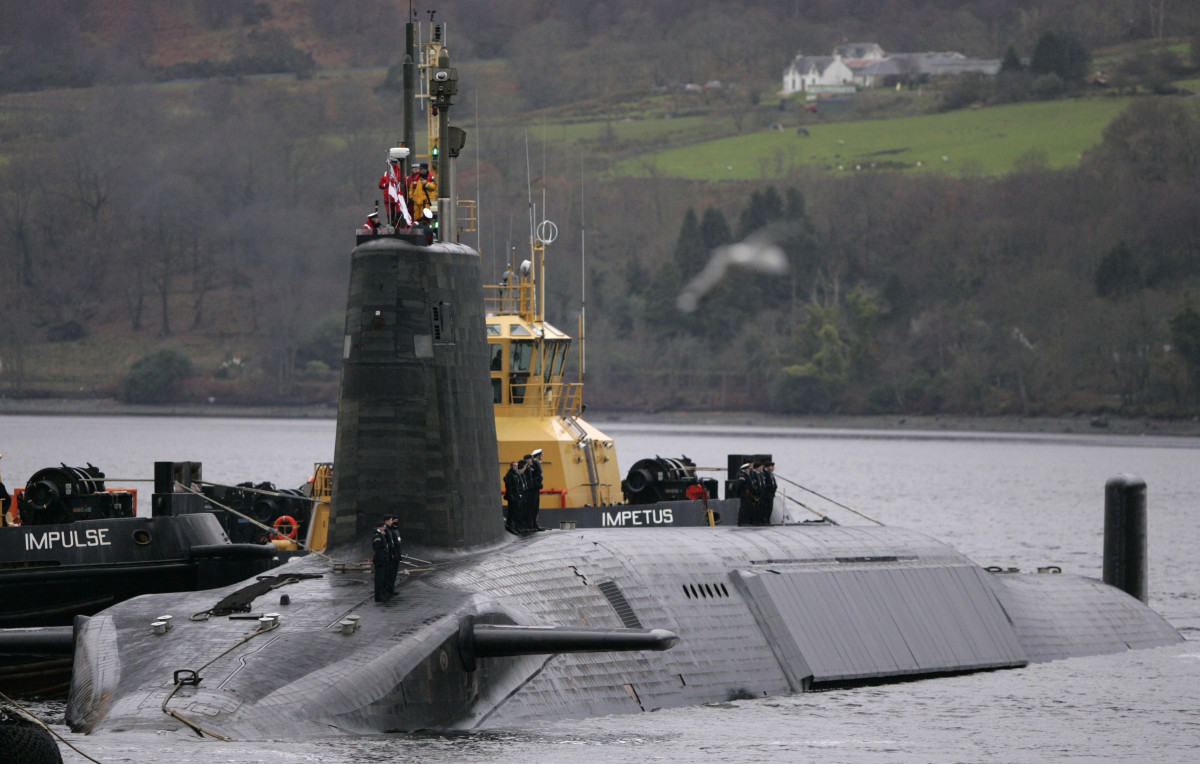Russian sensors designed for British nuclear submarines were discovered in the surrounding days of Britain, revealing a British Sunday Times investigation. Some sensors were discovered after drifting to the English coast, while others were found by the British Royal Navy. The discovery, which is considered a potential threat to national security, has only been published on Sunday (Sunday) and is part of a widespread Russian kit of a “gray area” warrior, which also directed against Energy Infrastructure and Essential Internet communication in the West.
The sensors, apparently placed by Moscow, are intended to collect intelligence on four British “Naglard,” which bears nuclear missiles. According to the doctrine of British deterrence, one of these submarines is at any given moment in the sea, so -called “continuous marine deterrence.”
As part of a three-month investigation, Times reported with more than a dozen former defense ministers from England, senior defense forces and military experts, who revealed how Russia uses its advanced under-water warriors to map, break out, and a potentially rope with critical British infrastructure.
Military senior officials compare the technological struggle for supremacy in the underwater arena, to the space race between the US and the Soviet Union during the Cold War.
The Russian underwater research program is mainly supervised by the main director of deep sea research-Gugi. Her best known tool is the “Yantar” espionage ship, which was published last year when she appeared in front of the Britain’s coast. The ship is equipped with unmanned underwater vehicles and two “mini-submarines” capable of reaching a depth of 6,000 meters, measures that allow “tort” to find and make infrastructure maps, as well as cut cables or listen to the information transmitted by them.
Last November, the “Tint” was found in the Irish sea wandering by cables that transfer data to Microsoft and Google. A deep water tour of the British Royal Navy, Proteus sent to follow it – or, as a security source described before the Times, to show Russia that “they are drinking in our backyard,” that is, there were no place.
According to Times, even before the invasion of Ukraine about three years ago, Russia began preparing the ground for a wider conflict with NATO, engaging in monitoring and sabotaging the underwater Internet connections, energy pipes and military cables that are essential for the functioning of Western democracies.
The “Nord Stream” gas pipe explosion in 2022 was the first significant incident. British fleet officials claim that the military accuracy of the action carries all the appropriate signs of the Kremlin activity. In the last 15 months, at least 11 web cables in the Baltic Sea have been damaged, some as a result of ships that have dragged anchors across the sea.
“There is no doubt, a war in the Atlantic is going on,” said British military senior active service to Times. “This is a cat and mouse game that has continued since the end of the Cold War, and now heating again. We see huge amounts of Russian activity.”
Three senior security sources revealed to the Times that before the invasion of Ukraine, reliable intelligence was accepted that yachts of Russian oligarchs were used to perform underwater tours around the United Kingdom. These yachts have “moon pools” – openings in the body of the ship whose power to serve secretly for deployment and collection of diving equipment and deep tour.
A former English minister even told Times how, in 2018, a British landing ship had to leave a port in Cyprus early, less than 24 hours after defending there, when a huge yacht belonged to a Russian oligarch on her side and near it. On suspicion of her goal for the British ship, “the military ship left quickly,” the minister told the newspaper.
About a fifth of Britain’s energy supply now comes from marine wind gestures. The electricity produced in these turbines is transferred to land through underwater cables that can be easily damaged. “If you cut them, you will lose this energy – and in winter, during high consumption, it may be severe,” said a military senior to Times.
In response to the threat, in 2023, Britain purchased the RFA Proteus, a deep water tour, with the aim of protecting critical subclassic infrastructure. The ship is equipped with advanced autonomous automotive vehicles, including the Seacat, a torpedo vehicle that can operate for 24 hours at 300 meters deep, and the Gavia that can dive into a depth of 1,000 meters.
In addition, the British government examines as part of its Atlantic Sea Program Program, “Atlantic in the Stayon”, developing a new fleet of air vehicles, above and under the sea, as well as sensors, to supervise British water and the wider northern Atlantic.
“Our role is to defeat every threat to Britain and also get it out of the Gray Region,” said Captain Simon Terody, one of the top officers in the Times project. “We are doing the latter by understanding who is involved and provides evidence to prevent misunderstandings and require those who threaten the UK to take responsibility for their actions.”
With the British government’s commitment to invest 2.5% of its GDP for security and protection needs by 2027, additional investment in sub-hymn warfares is expected, including discussions on the purchase of another Proteus style ship. To the sea.
